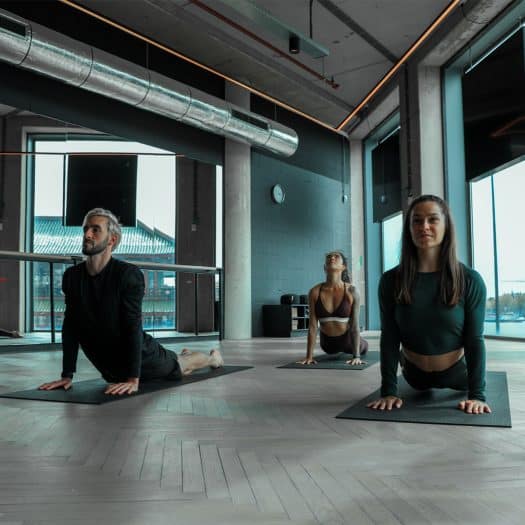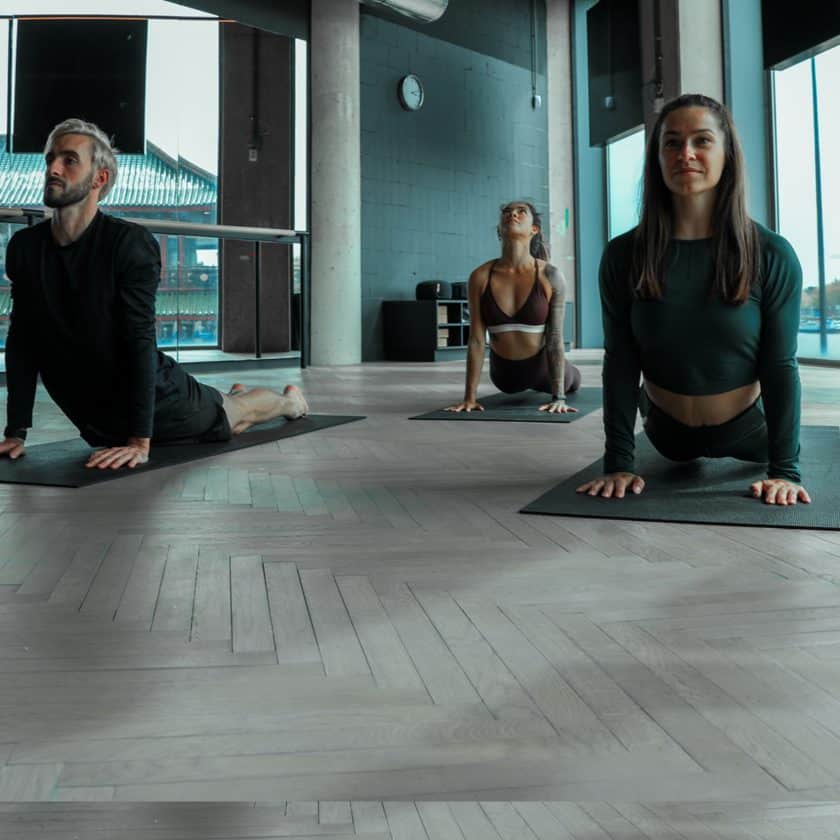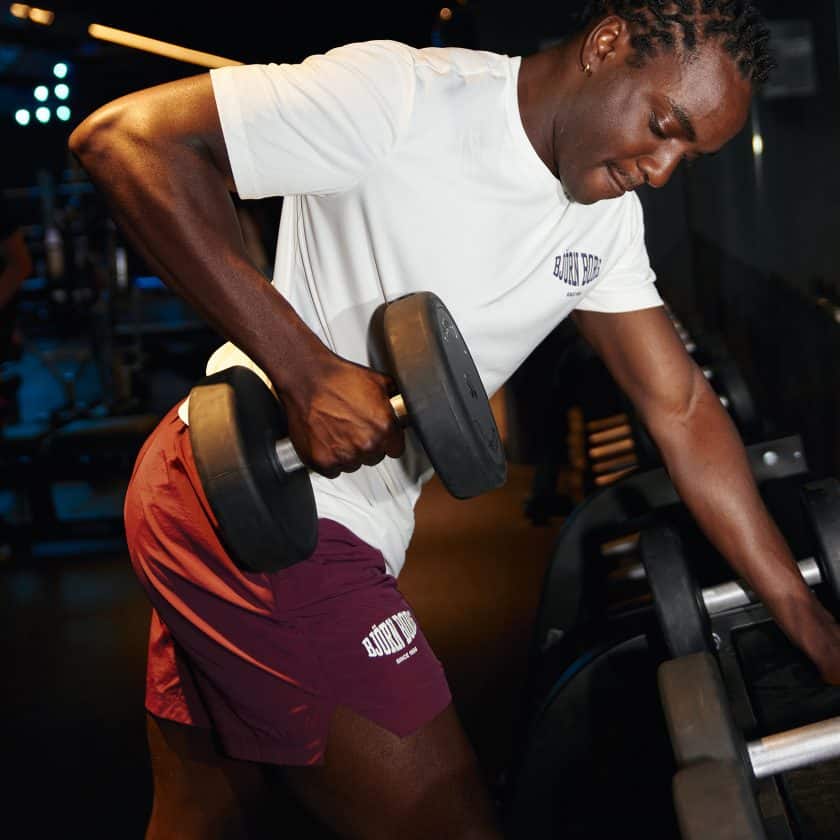Dynamic Stretching vs Static Stretching
We all know that giving your all in the gym is the best way to stay fit and healthy. So, you sweat it out on the cardio machines, and you give everything you have in the squat rack. But how much attention do you give to stretching after your workouts?
We noticed that stretching often isn’t the biggest priority after a big gym sesh. But stretching might be just as important as the routine itself. Yeah, we know. Not enough people talk about this, so we’re going to change this. ‘Cause stretching plays a crucial role in improving flexibility, preventing injuries, and enhancing your overall performance. In this blog, we'll dive into the world of stretching by exploring the differences between dynamic stretching and static stretching. Wanna bet that after reading this blog, you’ll be ready to unleash the power of flexibility!
What is Stretching and Why Should You Do It?
Before we dive into the wonderous world of stretching, let’s first take a moment to explore what stretching is and why you should do it to begin with.
Stretching is the intentional lengthening of muscles and tendons to improve their flexibility and range of motion. It’s like giving your muscles a much-needed stretch and wake-up call. When you engage in regular exercise at the gym, your muscles contract and tend to tighten. This can result in things like stiffness in, for example, the back or hamstrings. Stretching helps to counteract this because when you stretch, your muscle lengthen and relax. This helps to restore the balance in your body.
Benefits and Effects of Stretching
Now, why should you incorporate stretching into your gym routine? Well, first off, stretching helps to improve your overall performance. When your muscles are flexible, they can move more freely, allowing you to perform exercises with proper form and efficiency. This means better gains and reduced risk of injuries. But there are more reasons:
1. Increases your Flexibility:
Flexibility is the name of the game when it comes to stretching. Flexibility isn’t just about showing off your bendy skills like a yoga superstar (although that’s pretty cool too!). It’s actually a game-changer for nailing those strength exercises with style and finesse. Picture this: with increased flexibility, you can achieve a larger range of motion and execute exercises with better form, which ultimately enhances your strength gains and reduces the risk of injury.
2. Prevents Injuries
Tight muscles are more sensitive to injuries, such as strains or sprains. Stretching regularly helps to lengthen and relax your muscles. This reduces the risk of muscle imbalances and overuse, which can lead to And the perks don’t stop there! Stretching goes deep, boosting your blood flow and delivering those muscle-nourishing nutrients like a champ.
3. Muscle Recovery
A good stretch is essential for the recovery of the muscles after an intense workout. It helps to beat post-exercise soreness and discomfort by increasing blood flow and flushing out metabolic waste products. Stretching also reduces muscle tension, which is key for a quicker recovery between workouts. Sounds great, right?
4. Improved Range of Motion
Stretching regularly can give you a mind-blowing your range of motion. Say hello to performing your exercises with a fuller range! This will allow you to go all-out in exercises and activities that demand flexibility, like yoga, dancing, or showing off your martial arts moves. Not only do you become a total ninja in these activities, but even your everyday tasks become more fun and easy-peasy. Bending down, reaching for stuff – you’ll do it with the grace of a pro!
The difference between mobility and flexibility
Now, let’s talk about mobility and flexibility. They might sound like twins, but they’re not! Imagine this: flexibility is like that bendy yoga guru who can touch their toes with ease, while mobility is more like a ninja who can move freely and gracefully through different positions.
Flexibility is all about those limber muscles and joints that allow you to stretch like a rubber band, while mobility is about having the strength, control, and range of motion to perform various movements. So, you can be super flexible but still struggle to bust out a proper deep squat or do a kick-ass push-up. On the flip side, if you’re mobile, you’ve got the ticket to tackle functional movements like lunges or overhead presses like a boss. The bottom line? Don’t settle for just being a human pretzel – work on both flexibility and mobility to unlock your body’s full potential.
Dynamic Stretching vs. Static Stretching
Now, let’s explore the differences between dynamic stretching and static stretching. Both have their place in your workout routine, but understanding when to use each can take your flexibility game to the next level.
Dynamic Stretching
Let’s start with Dynamic stretching. Dynamic stretching involves active movements that mimic the exercise or sport you’re about to perform. It warms up your muscles, increases blood flow, and activates the nervous system. Dynamic stretching gets your body all fired up, boosts blood flow, and wakes up your nervous system. They are typically done in a controlled and smooth manner, without holding the end position.
Think of walking lunges, arm circles, or high knees. Dynamic stretching are great before a workout, because they prep you for all the action that’s about to go down in the workout!
Static Stretching
Then you also have, static stretching. These are all about holding those stretches for a little longer, like 15-60 seconds. You know those standing quadriceps stretches where you pull your foot towards your booty, or those seated hamstring stretches where you reach for your toes? That’s the static stretch.
Static stretching is like a slow dance with your muscles, gently lengthening the target muscle to improve flexibility. Static stretches are commonly performed at the end of a workout or as a separate stretching session. They are perfect after a workout and to cool down your body, relax your muscles, and improve overall flexibility.
Remember, moderation is key when it comes to stretching. Avoid overstretching or bouncing during static stretches, as this can lead to muscle strains or injuries. Listen to your body, embrace discomfort but not pain, and be patient as you gradually increase your flexibility over time.
Dynamic or static stretching: what to choose?
Now you wonder, which of the two should I go for? Deciding between dynamic stretches and static stretches can be like picking between two awesome dance moves – both have their place, and it all depends on what you’re about to do!
If you’re gearing up for some action-packed workout or sports activity, dynamic stretching is your go-to hype squad. It warms up your muscles, gets the blood pumping, and primes your nervous system for peak performance. Think of it as the pre-game party for your muscles!
On the other hand, when it’s time to cool down after a killer workout, or you just want to boost your overall flexibility (or nail that flat split), static stretching is your soul-soothing partner. Holding those stretches gently lengthens your muscles, increases flexibility, and helps your body and mind unwind.
So, the key is to rock some dynamic moves before the main event and bust out those static stretches when it’s time to chill. Combine both, and you’ll have a flexibility game that’s on fire!
Wrap up
You now have the flexibility (pun intended) to understand the power of stretching and its impact on your fitness journey. Whether you opt for dynamic stretching to warm up before a workout or static stretching to cool down afterward, incorporating stretching into your routine is a sure-fire way to improve your performance, prevent injuries, and enhance your overall well-being.
So, the next time you hit the gym, don’t forget to show your muscles some love by incorporating a stretching routine into your workout. Embrace the benefits of increased flexibility, injury prevention, and improved range of motion. Get ready to stretch, flex, and conquer those fitness goals like never before!






